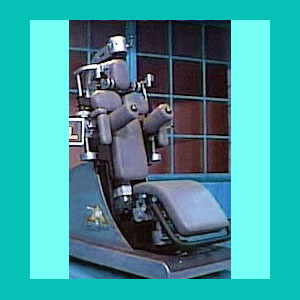
Spinal decompression for herniated discs is statistically the very best use of this highly effective noninvasive treatment modality. Decompression therapy has been developed to cure symptomatic expressions caused by several different spinal conditions, including degenerative disc disease, facet joint syndrome and some forms of foraminal stenosis. However, the therapy offers the best curative statistics for relief of pain due to herniated discs.
This discussion will profile decompression treatment for disc prolapse and tell patients exactly what to expect if they choose to pursue therapy using the DRX9000, AccuSpina or Vax-D systems.
Spinal Decompression for Herniated Discs Facts
Decompression treatments work by gently stretching the spine, expanding the intervertebral spaces and taking pressure off compressed or bulging discs. The vacuum effect of this stretching helps to pull the disc structure back in line with the vertebral bodies, reducing the severity of herniations considerably.
Intervertebral discs are soft tissues and are subject to intense pressure from the weight of the body and all the loads placed on the spine from our wide range of possible activities. Spinal decompression removes pressure from affected intervertebral discs and allows them to regain height and diameter.
Decompression therapy has been approved to treat a wide range of disc concerns and shows very good results for permanently ending pain in many appropriately treated individuals.
Spinal Decompression for Disc Pain
Decompression is typically performed daily, or almost daily, for about one month, depending on the type of system used and the extent of the disc condition. The treatment lasts 30 to 60 minutes and many care providers also incorporate other complementary therapies into the visit, such as heat/ice, massage therapy or TENS treatment.
Patients are secured into the device by a special harness which isolates the area to be treated. The machine is computer controlled and will apply targeted force to a very specific area of the spine. This will allow the best results over the shortest time frame and prevent changing the spinal anatomy in regions unaffected by pain.
The decompression machine itself may look intimidating, but the entire treatment process is incredibly gentle and even soothing for many patients. There are no jarring movements, no sensation of being stretched uncomfortably and almost always no pain.
Patients can listen to music or watch television during their treatment and the care provider is right there if the patient requires any physical assistance or emotional reassurance.
Spinal Decompression for Herniated Discs Opinions
I support decompression therapy for individuals with confirmed structural disc pain. These patients typically do not respond well to many other medical treatments, but can be cured non-surgically using appropriate decompression therapy. I often recommend allowing some time to pass prior to treatment, to see if the disc pain condition will heal on its own. This way, some patients might be able to save the considerable cost of decompression care.
The best part of decompression for herniated and degenerated discs is that it works quickly and most patients see incredible results within a few weeks. This is far better than the years or decades of unsuccessful treatments endured by many poor souls.
Read more about DRX9000.
Read more about VAX-D.
Read more about Accuspina.
Herniated Disc > Spinal Decompression > Spinal Decompression for Herniated Discs





